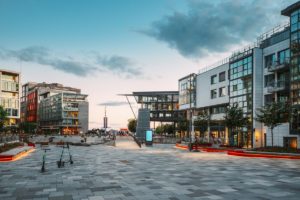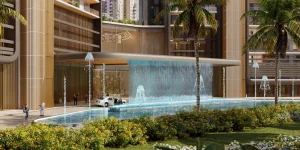When exploring real estate, many people get confused about the difference between carpet area and built-up area. Knowing the difference between carpet area and built-up area is important.
Table of Contents
This knowledge helps buyers, sellers, and real estate fans make smart choices. Let us demystify these terms, highlighting their importance and how they impact property transactions.
What is RERA?
RERA, or the Real Estate Regulatory Act, was introduced in 2016, bringing significant changes to property transactions. It had a profound impact on how developers operated.
Before RERA, real estate builders often used terms like built-up area and super built-up area for marketing, which created confusion. The actual usable space available to buyers was often much less than expected, leading to disappointment among uninformed homebuyers.
RERA put an end to this ambiguity by mandating clear disclosures. Developers could no longer manipulate pricing based on corner apartments or larger balconies. Now, all properties must be sold strictly based on carpet area, ensuring that buyers can make informed decisions when selecting their dream home.
What is Carpet Area?
Carpet Area is the actual usable space inside a property, where you can place furniture and move around freely. It excludes walls, balconies, and common areas, making it the most reliable measure of livable space for homebuyers.
As per the Real Estate (Regulation and Development) Act (RERA) of 2016, builders must clearly define and disclose Carpet Area while selling properties. This eliminates misleading marketing tactics where properties were previously sold based on built-up or super built-up areas.
What’s Included in Carpet Area?
✔️ Living room, bedrooms, kitchen, and bathrooms
✔️ Passageways and hallways within the apartment
✔️ Private storage spaces inside the unit
What’s Not Included in Carpet Area?
❌ Internal and external walls
❌ Balconies, terraces, and verandas
❌ Common spaces like staircases, lift lobbies, and corridors
What is Built-Up Area?
Built-Up Area includes the carpet area plus the thickness of walls, balconies, and ducts. It provides a bigger number than the carpet area but does not fully represent usable living space.
What’s Included in Built-Up Area?
✔️ Carpet area (actual usable space)
✔️ Thickness of internal and external walls
✔️ Utility ducts and service shafts
✔️ Balconies, terraces, verandas
What’s Not Included in Built-Up Area?
❌ Open spaces outside the property
❌ Shared/common areas (staircases, lobbies, elevators, etc.)
Built-Up Area vs. Carpet Area: Key Differences
| Feature | Carpet Area | Built-Up Area |
|---|---|---|
| Definition | Actual usable space inside the house | Carpet area + walls, ducts, and balconies |
| Includes internal walls? | ❌ No | ✅ Yes |
| Includes external walls? | ❌ No | ✅ Yes |
| Includes balconies? | ❌ No | ✅ Yes |
| Larger measurement? | ❌ No | ✅ Yes (10-15% more) |
| More important for homebuyers? | ✅ Yes (Real livable space) | ⚖️ Moderately |
Importance of Carpet Area and Built-Up Area in Real Estate
The difference between carpet area and built-up area is important in real estate. It helps different people in various ways.
- For Buyers: Knowing the carpet area helps buyers understand the actual usable space available in the property. This is vital for assessing whether the property meets their space requirements.
- For Sellers: Clearly showing the difference between built-up and carpet area can make a property listing clearer. This helps attract serious and informed buyers.
- For Developers: Accurate area calculations are important for developers. They help design buildings that use space well and follow local building rules.
Exploring Gurgaon’s Residential Market: A Case Study
The real estate market in Gurgaon is booming for premium property investments. This includes luxury homes, high-rise apartments, and resort-style homes. These segments highlight the critical importance of understanding the differences between carpet area and built-up area.
Advertisers often promote luxury homes in Gurgaon for their large carpet areas. These homes provide spacious living areas that promise comfort and style. The carpet area in these luxury homes is a key selling point. It directly affects the lifestyle that buyers can expect.
Similarly, architects design high-rise apartments in Gurgaon in sector 85 to maximize the use of vertical space. In these buildings, it is important for buyers to know the difference between carpet area and built-up area. This helps them balance shared amenities and private living space.
High-rise apartments in Gurgaon are very attractive. Their location and views are great, making it important to use every square foot wisely.
Lastly, resort-style homes in Gurgaon mix luxury and leisure. Knowing the built-up area helps buyers see extra amenities like private gardens, patios, or swimming pools.
These resort-style homes represent a lifestyle focused on relaxation and luxury. Accurate area measurements are important for investment and lifestyle choices.
In Gurgaon, we can see how carpet and built-up areas impact luxury homes. These factors influence both the value and appeal of the properties. This understanding aids buyers, sellers, and developers to make informed decisions that align with their expectations and investment goals.
How to Calculate Carpet Area and Built-Up Area
Calculating these areas can often seem complex, but understanding a few key concepts can simplify the process:
Carpet area measures the distance between the inner walls of the property. You multiply the length by the width.
Formula to Calculate Carpet Area:
- Carpet Area = Total Floor Area – Thickness of Walls (excluding external walls).
Built-Up Area: To calculate the built-up area, you take the carpet area and add the area covered by walls, balconies, and other unusable spaces.
Formula to Calculate Built-Up Area:
- Built-Up Area = Carpet Area + Area Occupied by Walls (including the external walls) + Balconies.
The difference between carpet area and built-up area often leads to discrepancies in property size listings, which can affect pricing and property taxes.
Impact on Property Pricing
Understanding the difference between carpet area and built-up area is essential for financial implications in real estate transactions. Real estate agents usually price properties per square foot or square meter. It is important to know which measurement (carpet or built-up) calculates the total price.
- Carpet Area: This area is smaller than the built-up area. Properties priced this way may seem more expensive per square foot. However, they actually provide more usable space.
- Built-Up Area: Properties priced on the basis of built-up area might seem cheaper but give you less usable space.
Legal Aspects and Documentation
Legally, the difference between carpet area and built-up area becomes significant in terms of compliance with local laws. Documentation and sale agreements should clearly state the area they refer to. In some areas, laws now require sellers to base property sales on carpet area. This change aims to improve transparency and protect buyers.
Challenges and Considerations
Misunderstandings about the difference between carpet area and built-up area can lead to disputes and dissatisfaction. Buyers may feel cheated if the usable space is much smaller than they expected from the built-up area. Thus, real estate agents and sellers need to communicate these distinctions clearly.
Conclusion
The difference between carpet area and built-up area is an important idea in real estate. It impacts many parts of buying and selling properties.
By understanding these differences, stakeholders can make better decisions. They can avoid conflicts and see the true value of property spaces. Whether you are buying a new home or planning to sell one, understanding these terms is essential. This knowledge helps you navigate the real estate market effectively.
FAQs About Carpet Area and Built-Up Area
What does built-up area include?
Built-up area = Carpet Area + Wall Thickness + Balcony.
It includes everything inside your apartment, including internal walls and balconies.
How do I calculate the carpet area of my flat?
Carpet area is the net usable area inside the apartment, excluding the walls, balconies, and common spaces. Formula:
Carpet Area=Total Area−(Wall Thickness+Balconies+Common Areas)








